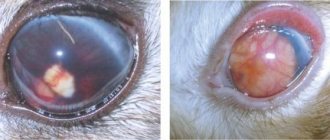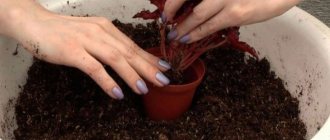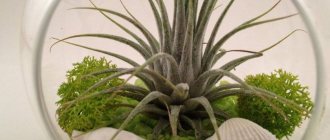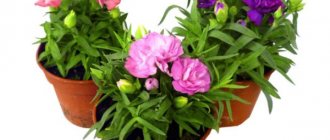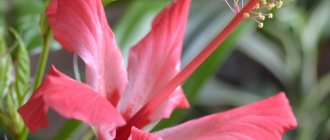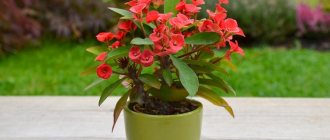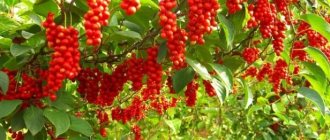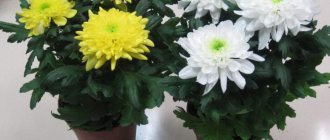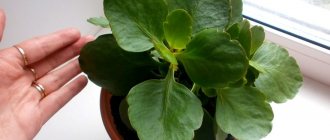Main Factors
Palm tree is a tropical plant. To keep it in an apartment, the owner needs to make an effort and create conditions in which it will be comfortable. Otherwise, the foliage turns yellow, turns brown or dries out, and the plant itself may even die.
Palm leaves may fall off due to natural reasons. During the process of natural falling, plants usually shed the lower part of their foliage. However, the leaves turn yellow due to other reasons that gardeners should be aware of.
Dry air
Many people who have indoor plants may wonder why palm leaves turn yellow. Intensive heating in apartments in winter causes dry air. They feel uncomfortable in such conditions. The optimal temperature during cold periods should not exceed 15-20 °C.
To optimize living conditions, the air is humidified. Flower growers also spray their plants with a spray bottle and moisten the top layer of the earthen clod in which the palm tree is planted. It is worth remembering that frequent watering is not required.
Drafts
The statement that at home a palm tree should be kept in the south is incorrect.
Direct sun rays do not bring him any benefit; they have a detrimental effect. The best solution would be to place the container with the plant at a short distance from the window opening.
Drafts are a phenomenon that is contraindicated for palm trees. Winter drafts are especially harmful. Cold air causes damage, due to which the leaves change their color (turn yellow, turn brown or turn black) or even fall off, and the plant itself withers and dries.
It is worth remembering what needs to be done with the plant while the room is being ventilated. Experienced flower growers recommend covering the palm tree with a cloth or taking it out of the room. Do not block the flow of fresh air, otherwise the growth process will slow down.
Frequent and incorrect transplantation
Another common reason why palm leaves turn yellow is improper replanting. Many gardeners may make the mistake of replacing the pot in which an indoor palm tree grows too often.
Moving from one pot to another is necessary when the root system grows so much that the old container becomes small. For young plants, this frequency is no more than once a year. Older trees are usually replanted once every three years.
Sometimes replacing the top layer of the earthen clod will be a sufficient measure to prevent problems and save the plant from withering and death. It is also worth remembering that the new pot in which the indoor palm tree will be planted must be taller and wider than the previous one.
Common causes of yellowing foliage
Sometimes palm leaves turn yellow and fall off for a natural reason - the plant gets rid of old lower leaves. But most often yellow leaves appear for other reasons.
Dry air
Owners of indoor plants are often perplexed as to why palm leaves dry out. Often in winter it becomes hot in apartments due to hot radiators. This atmosphere has a negative impact on green plants; for a palm tree, a suitable temperature in winter is considered to be between 15 and 20 degrees. Dry air must be humidified; the tropical plant should be sprayed with a spray bottle. The top layer of soil should be moist; the palm tree should not be watered frequently.
Draft
The opinion that a palm tree can only be placed in the southern part of the room is incorrect. Direct sunlight has a detrimental effect on the plant; it is best to place the pot a little away from the window. In winter, a cold window sill harms the flower; at this time of year, most palm trees dry out and wither, their leaves turn yellow, blacken and fall off. Drafts are contraindicated for palm trees.
During ventilation, it must be covered or taken out of the room. At the same time, the access of fresh air to the palm tree cannot be stopped, otherwise growth will slow down.
Frequent replanting
One of the answers to the question why the leaves of an indoor palm tree turn yellow is improper replanting. You need to place a palm tree in a new pot when it is cramped in the old pot, the roots have grown too much. Replanting a young plant should be done no more than once a year. In some cases, the top layer of soil can be replaced. An older flower is replanted approximately every three years. The new pot should be taller and wider than the previous one.
Malicious organisms
The reason why palm leaves turn yellow does not always lie in the conditions under which the plant is kept. The answer to a question that worries many gardeners may be somewhat unexpected, but natural.
Shchitovka
Scale insects are the most common insects, due to which the palm tree dries out and the foliage changes its color or falls off altogether. Scale insects are homoptera brown insects with a rounded body. Females have a so-called scute. Pests attach themselves to the young shoots of the plant, sucking out the juices.
Among the many options for combating scale insects, a grower can choose the one that he considers most effective. If the choice falls on insecticides, it is recommended to use Actellik. This drug has proven to be the most effective.
Spider mites
These insects are difficult to see and notice. The peculiarity of their activity is not only that the leaves on the palm tree turn yellow, but also that they begin to become covered with cobwebs.
Mealybug
The insect known as mealybug is the most dangerous to trees and can also be the reason why palm trees turn yellow. This louse is white in color and large in size. When attacked by this pest, the foliage turns yellow, the plant becomes as if sprinkled with flour, and all parts of the tree are covered with mucus.
Olive oil helps in the fight against mealybugs
Reasons why palm leaves turn yellow and dry
Palm wilting occurs for two reasons: improper care and insect pests.
By eliminating these unfavorable factors, you can combat the consequences: softened trunk, dry tips of leaves, yellow coloring of branches.
In order to deal with the diseases of this ornamental plant, it is worth linking them with previous causes:
- excess moisture or the use of low temperature water can lead to the appearance of dark spots on the foliage of the flower. Establishing sufficient drainage will eliminate this problem;
- the leaves of the date palm begin to turn yellow and dry out due to insufficient watering or the use of hard water;
- a soft rotting trunk of a plant may be the result of excess moisture in the soil. In this case, you should carefully examine its root system, clean it of dead roots and replant it in another pot with good drainage and fresh soil;
- dry air, drafts and cold temperatures may be the answer to the question why the tips of the leaves of the domestic date palm dry out and turn yellow. Using an air humidifier, regular spraying and creating a constant required temperature will help cope with these problems;
- Spider mites are the most common pest for domestic green “pets”. It starts in the spring in the stems of the plant, gradually enveloping it in a barely noticeable web;
- The scale insect is the main enemy for the exotic beauty, because, feeding on its juice, it slowly covers the leaves with small scales. Such an insect may also be the reason why date palm leaves turn yellow;
- thrips is a parasitic insect known to gardeners that damages the lower parts of the palm stem, which leads to rapid drying of not only the leaves, but the entire plant;
- Mealyworm - starts in young shoots, sucking their juice. The infected flower becomes covered with a white cobwebby coating and dies.
Blackening of foliage
The tips of the leaves may turn black. The causes of this problem most often lie in the conditions in which the indoor palm tree is kept.
Today, the following factors are known to cause blackening of foliage in palm plants:
- Dry air predominates in the room.
- The palm tree is not watered properly.
- The influence of cold air currents.
- A compacted earthen lump.
To help the plant, you don’t need to do anything special, just eliminate the cause of the problem. Flower growers recommend fertilizing with fertilizers.
If you had to think about the question of why the leaves of a palm tree dry out, or other unhealthy metamorphoses are observed, then you should think about whether the basic recommendations for the maintenance of the plant have been violated. Knowing how to properly care for a palm tree, you can avoid the need to save it from problems with leaves and from possible death.
In order not to rack your brains over why the palm tree dries out, you should not lose sight of the following points:
- Maintain optimal air humidity.
- Ventilate the room in which the palm tree is kept.
- Ensure the natural process of moisture evaporation.
Not forgetting that palm leaves turn yellow mostly due to violations of optimal conditions, many problems can be avoided. By adhering to basic rules, a florist can enjoy the fact that a healthy and beautiful palm tree grows in his home for a long time.
Common causes of yellowing foliage
Sometimes palm leaves turn yellow and fall off for a natural reason - the plant gets rid of old lower leaves. But most often yellow leaves appear for other reasons.
Dry air
Owners of indoor plants are often perplexed as to why palm leaves dry out. Often in winter it becomes hot in apartments due to hot radiators. This atmosphere has a negative impact on green plants; for a palm tree, a suitable temperature in winter is considered to be between 15 and 20 degrees. Dry air must be humidified; the tropical plant should be sprayed with a spray bottle. The top layer of soil should be moist; the palm tree should not be watered frequently.
Draft
The opinion that a palm tree can only be placed in the southern part of the room is incorrect. Direct sunlight has a detrimental effect on the plant; it is best to place the pot a little away from the window. In winter, a cold window sill harms the flower; at this time of year, most palm trees dry out and wither, their leaves turn yellow, blacken and fall off. Drafts are contraindicated for palm trees.
During ventilation, it must be covered or taken out of the room. At the same time, the access of fresh air to the palm tree cannot be stopped, otherwise growth will slow down.
Frequent replanting
One of the answers to the question why the leaves of an indoor palm tree turn yellow is improper replanting. You need to place a palm tree in a new pot when it is cramped in the old pot, the roots have grown too much. Replanting a young plant should be done no more than once a year. In some cases, the top layer of soil can be replaced. An older flower is replanted approximately every three years. The new pot should be taller and wider than the previous one.
Temperature
The reason for yellowing of foliage can be too low indoor air temperature in winter. Do not forget that the palm tree is a tropical plant, which in its homeland is constantly located in a warm climate. , brought from tropical latitudes, need a temperature of 16 to 24 degrees.
Palm trees growing in the subtropics are able to withstand lower temperatures, not lower than 8 degrees.
Regardless of the type, this plant does not like drafts, and its roots do not like cold. A pot with a palm tree should not be placed on a windowsill or concrete floor during the cold season. Pots will help protect against hypothermia in winter and excessive overheating of roots in summer - the air gap between the walls will act as a thermostat.
Why palm leaves dry out: main reasons
Although most indoor palms are true tropical plants, they do not tolerate heat well, especially if high temperatures are accompanied by low indoor humidity.
The risk of leaves drying out at the tips increases significantly during the heating season, when currents of hot air rise from the radiators.
In addition to these factors, a palm tree can dry leaves in the following situations:
- Temperature changes or exposure to drafts;
- Frequent transplants unnecessarily;
- Improper watering (severe drying out or waterlogging of the earthen clod);
- Mineral fasting;
- Impact of pests and consequences of diseases.
Keeping the palm tree in a suitable microclimate and normalizing care solves the problem of drying leaves.
Important: if you find dried leaves on a palm tree, do not panic - often the lower tier dies off on its own as the crown grows.
Low air humidity: what to do?
Dry air not only does not add beauty to a home palm tree, but also affects its health, reducing resistance to pests and diseases.
That is why the primary task is to normalize humidity, which can be achieved in several ways:
- Spray the leaves daily with a spray bottle. You need to use warm, settled water, dispersing it with a fine spray.
- Install special devices. An electric humidifier is an ideal solution during the heating season.
- Create natural hydration. Several pots with plants, bowls with expanded clay, filled with water, release moisture, maintaining an optimal microclimate.
Additionally, you can cover the batteries with a wet towel if the pot with a palm tree is on a windowsill or near a window.
Ventilate the room periodically if the outside temperature rises above zero. Bathing in a warm shower will also benefit the plant and improve the condition of the foliage.
Unsuitable temperature and drafts
Winter maintenance of a home palm tree should be given special attention, since it is during the cold months that the plant is at rest, accumulating strength for future active growth.
“Equatorial” indoor temperatures are the worst thing you can do to a palm tree during its resting period. The heat causes the leaves to dry out, the crop loses its attractive appearance and subsequently takes a long time to recover.
The temperature in the room must be maintained depending on the type:
- +8-+12 degrees – for Washingtonia, trachycarpus and brachea;
- about +24 – for the Robelena date, chamedorea and areca;
- +16 degrees – for rapis, rapalostilis and sabal.
Without ventilation, palm tree leaves dry out at the tips, and drafts harm the crown. Maintain a balance - take the pot out of the room when you open the window so that the green mass is not damaged by cold air flows.
Frequent transfers
Improper replanting is the reason why palm leaves may turn yellow and dry at the tips. It is necessary to transfer the plant into a new pot only after the earthen clod has been completely developed, so that the sensitive root system is not injured.
Young specimens need to be replanted once a year, adult palm trees - every 2-3 years. Large trees in massive tubs are not touched, but only the top layer of soil is replaced with fresh soil and fed regularly.
An unscheduled transplant is justified only if the palm tree is sick and needs to resuscitate the root system or completely replace the soil.
Similar situations arise when there is an invasion of pests, the development of root rot and severe waterlogging of the soil in the pot.
Improper watering
Lack of moisture in the soil inevitably affects the green mass of the palm tree, causing the tips to dry out. Excessive watering is fraught with similar external consequences, but the root system suffers more in such a situation.
A dried palm tree can be watered, but a plant that has suffered from waterlogging requires serious measures.
Simple recommendations will help you avoid mistakes in watering:
- Moisten the soil in the pot only after the top layer (2-3 cm) has dried.
- Use warm or room temperature water, allowing it to sit for several days until sediment forms and the chlorine evaporates.
- Drain off any liquid that remains in the pan half an hour after watering.
- In winter, moisten the substrate less often than in summer, since moisture evaporates more slowly in cool conditions.
A home palm tree needs a high-quality drainage system that prevents moisture from stagnating around the roots. Make sure that there are special holes at the bottom of the pot, and before each transplant, lay a layer of expanded clay before filling the soil.
It is not recommended to water a dry indoor palm tree with a “shock” portion of water - this will lead to breakage of the roots and subsequently affect the ability to absorb nutrients. It is better to solder the tree gradually, slightly moistening the substrate every couple of hours.
If the palm tree begins to dry out its leaves due to severe waterlogging of the soil, it is better to immediately replant it in fresh, light soil.
Carefully remove the plant from the container, remove all waterlogged substrate and inspect the roots, removing any rotten or dead areas.
The cut areas must be sprinkled with crushed charcoal, which will prevent further spread of rot. After transplantation, moderate watering is recommended, while it is better to keep the palm tree in light partial shade for 2-3 days.
Mineral fasting: why is it important to feed?
Iron, nitrogen, potassium, phosphorus and other microelements are important components of the complete nutrition of a palm tree. If they are deficient, the condition of the green mass deteriorates, the tips dry out, and the plant loses its decorative properties.
To prevent mineral starvation, it is enough to regularly apply special fertilizers for palm trees or compositions for decorative foliage indoor flowers.
The optimal frequency is once every 10-14 days during the active growing season (from spring to early autumn). Be sure to follow the dosage to avoid overfeeding.
It is necessary to fertilize the palm tree only in moist soil so that the root system does not suffer from burns.
Pests and diseases
Most often, palm trees are affected by scale insects, spider mites and mealybugs, which feed on the leaves and gradually spread throughout the plant.
Improper care significantly increases the likelihood of infection, since a specimen with a weakened immune system is unable to resist insects.
Insecticides “Fitoverm”, “Confidor”, “Aktellik” and their analogs show high efficiency in the fight against these pests.
Spraying the crown is carried out with a solution prepared according to the instructions on the package, the optimal number of treatments is 3-4 every 5 days.
In the presence of large colonies of insects, a highly concentrated dose of the drug is used (2-3 times more than recommended) and an additional spill of soil.
The leaves of a domestic palm tree can dry out and turn black as root rot spreads, which first disrupts the nutrition of the plant and then provokes its complete death.
At the initial stage of the disease, the palm tree can be saved through unscheduled replanting and normalization of agricultural practices.
Watering
Sometimes, trying to figure out what to do when the tips of a palm tree’s leaves dry out, they find the answer in reducing the amount of watering. The plant is considered moisture-loving, but only if there is good drainage in the pot. Otherwise, moisture is retained in the ground and the roots begin to rot.
And since some of the roots do not supply moisture to the crown, the leaves begin to dry out.
Watering should be done when the top third of the pot begins to dry out and the bottom third is still slightly damp. Also, the amount of water used varies depending on the air temperature - in fairly cold rooms (5-7 degrees), watering is carried out once every 1-2 months, or is completely replaced by spraying the crown. After moistening the soil, it should be loosened to open air access to the roots and ensure the evaporation of excess moisture.
How to fix problems
Proper watering
The most important condition for the formation of beautiful green leaves on a domestic palm tree is proper watering. In addition, the plants need regular spraying. It is imperative to carefully ensure that when watering the earthen ball is sufficiently evenly saturated with moisture. This nuance is revealed by simply tapping the pot. If the sound is ringing, it means the ground is dry. A dull sound—wet. It is also necessary to pour out excess water from the pan after watering the plant. Water for watering a palm tree should be used that has settled, and the plant should be watered only after the soil has dried, checking by tapping the pot.
Room temperature
It is necessary to monitor the air temperature in the room where the palm tree grows. It would be a mistake to assume that palm trees need heat in winter. Palm trees, which come from the tropics, survive the winter in moderately warm conditions, but subtropical beauties need cooler conditions in winter.
For most plants, the optimal temperature in winter is 16 -20 degrees. And you should not place the plant in a draft, especially in winter. Plants do not tolerate drafts, especially in winter; they are too sensitive to cold. To prevent damage to the palm tree's root system, do not place the plant on a cold marble floor or window sill in winter. Having placed the plant in a safe place, it is still necessary to ensure that the palm tree receives fresh air, otherwise its growth and development will slow down.
Hydration
Air humidification during the heating season is a prerequisite for maintaining a home palm tree. Dry air can greatly harm the plant. The leaves begin to dry out, the tips quickly turn yellow, and then gradually die off. Therefore, during the heating season, plants certainly need to be sprayed and humidified the air in the apartment. Giving your palm tree a gentle shower every morning will give you wonderful results and will also improve the humidity in your home. (It is better to take boiled, settled water for this purpose and pour it into plastic bottles for storage).
You can purchase a special air humidifier; today there are a great many of them on sale, with a variety of functions. They are capable of spraying water in a room, spraying it with the help of a fan. It is very convenient to use a hygrometer to determine the humidity in a room. There are even digital versions of hygrometers - thermohygrometers - with additional indication of air temperature and time. Although there is a popular method for determining humidity. You just need to put a pine cone in the room. If the room is dry, the scales on it open, and if it is damp, they close tightly.
Feeding and replanting
Today there are special liquid fertilizers for palm trees. In summer, the plant needs to be fed twice a month, and in winter, once is enough. If the root system has grown, it is necessary to promptly replant the plant into a pot of suitable size. But if this is done incorrectly, the palm leaves may begin to turn yellow. A young flower should not be replanted into a new pot more than once a year. An old palm tree can be replanted every three years. A new pot for a plant is chosen not only by color. It needs to be a little taller and wider than the old one. Also, when trimming the yellowed tips of yellowing leaves, you need to be careful not to cut off or damage the green part of the leaf. This will only cause the sheet to dry out faster and soon fall off.
Diseases and pests
Sometimes the cause of leaf drying on a palm tree is insect pests. Most often these are scale insects - small brown round-shaped insects, and females have small scutes. These insects, having attached themselves to the young shoots, suck the juices out of them. As a result, the palm leaves turn yellow and the plant may die. There are many traditional methods for killing insects, as well as insecticides that are quite effective.
Another threat is spider mites. This parasite is so small that it is difficult to see. Leaves affected by mites turn yellow and become covered with thin cobwebs. Before processing the plant, you need to thoroughly wipe the leaves with a damp cloth.
The biggest threat to palm trees is mealybugs, aka the great white louse. The affected plant seems to be sprinkled with flour, and the stems are covered with mucus. Parasites attack with lightning speed. The leaves turn yellow and the plant will soon die if urgent measures are not taken to save it.
Care and proper care will give you the opportunity to admire a beautiful ornamental plant in your home at any time of the year.
Frequent transplantation
The palm tree does not like frequent transplantation, but since this cannot be avoided at home, the procedure must be kept to a minimum. A young plant up to 3 years old, since during this period it already manages to outgrow the allotted pot. An adult palm tree is moved to a larger container every 3-5 years.
At the same time, they look at the direction in which the roots grow: accumulation at the edges requires an increase in the diameter of the pot, and at the bottom - the height.
During transplantation, the plant is moved along with a lump of earth in which the roots are located, this will protect them from damage.
Lighting
Sometimes the answer to the question of what to do if the leaves of a palm tree turn yellow is to change the location of the pot with the plant. It is best to place the palm tree a meter from the window; this will provide a sufficient amount of light, but will not allow direct sunlight to burn the leaves during the particularly hot summer months.
A plant located in the shade should be immediately moved closer to a source of natural light, since not a single palm tree can survive its absence.
Diseases and pests
Pests can settle on the palm tree and suck out the sap, which leads to yellowing of the leaves. These include:
The palm diseases shown in the photo at home are divided into fungal and bacterial. While the former can still be dealt with, the latter leave virtually no chance - it is better to get rid of the plant right away to avoid infecting other flowers. Diseases appear in the form of various spots on the leaves. The fight consists in the use of preparations based on fungicides. Also, all damaged areas must be removed from the plant and removed from the premises.
Add site to bookmarks
The question of why palm leaves turn yellow worries many lovers of home exotics. The palm tree is one of the exotic plants that have found application at home.
Yellowing of palm leaves is usually explained by improper maintenance conditions.
Conditions for the existence of a tropical plant at home
There are many varieties of palm trees, but not all of them are suitable for growing at home. Palm diseases arise due to the peculiarities of their care. Do not forget that the homeland for most of these trees is the tropics, because they are called tropical. Accordingly, for a tree to function normally, it is necessary to create conditions that are as close to natural as possible. First of all, adequate watering should be ensured. The tropics are not only hot, but also very humid. The plant by its nature requires a lot of water. Provide the palm tree with daily watering in the warm season; in the cold season, it can be reduced to 3-4 times a week. If you normalize the watering regime, the yellow and dry tips of the leaves will gradually return to normal.
The most common cause of yellowing palm leaves is lack of moisture.
Dry air is another factor that leads to plant leaves turning yellow. In the tropics, the air is never dry, so plants get used to high humidity, which is what they will require at home. To humidify the air, place a humidifier or hang a container of water in the room where the plant lives. After some time, the leaves should be saturated with moisture and turn green.
If these measures do not help, then most likely the tree requires a larger pot. It is worth knowing that it has a very branched root system and is not used to cramped conditions, so it will not put up with a small pot. The ideal solution is to transplant it into a spacious tub. If you think that a spacious home has already been allocated for the tree, then you should not touch it, but you can always feed the palm tree with specialized products from the store. Sometimes a tree begins to get sick because it simply does not have enough vitamins to maintain a full life. It is not allowed to replant the tree often, as it does not like it.
Like other indoor plants, palm trees can be susceptible to attack by various pests. Under their influence, it begins to wither, as a result the leaves turn yellow and dry out. Inspect the tree carefully; if you find any insects, treat the plant with store-bought insecticides.
If, despite all the measures taken, the yellowness still does not disappear from the leaves, you should pay attention to the place where the tree is located. The indoor palm tree does not like drafts; it prefers a warm, quiet place, but not near a central heating radiator. When the leaves of a palm tree dry, this means that the owner did not provide the tree with the freedom to which it is accustomed in its natural environment.
Why do the tips of the date palm leaves dry out? Why do spots appear? Date palm ailments can be associated with both disease and poor care
.
Fungal and viral diseases
Various pathogens are to blame for date palm diseases
:
- Fungi.
- Viruses.
- Bacteria.
Among fungal diseases, gray spot
. Signs of the disease are gray spots on the leaves, more so on older ones. As the disease progresses, black spots appear - these are fungal spores.
For treatment
It is necessary to remove all infected parts before the disease affects the entire plant. Next, the palm tree is treated with fungicides - special antifungal drugs. The same remedies are also applicable for another, no less common fungal disease - pink rot.
Bacteria lead to putrefactive processes. They are characterized by soft stems and leaves, which also become discolored and fall off. The appearance of bacteria is promoted by increased soil moisture and keeping them in a cold room.
If a mosaic-type pattern appears on the leaves, this signals a viral infection. Most often the plant is infested by insects
, which must be destroyed indoors in a timely manner. They may be:
- flies;
- mosquitoes;
- moths.
And other insects that can enter the room. For protection, mosquito nets should be installed on windows.
Once every six months it is necessary to carry out preventive treatment of plants with special chemicals.
Reasons for the loss of decorative appearance
Soil oversaturated with moisture can cause brown spots
. Watering with cold water also leads to the same result.
Softening the trunk
, combined with a putrid odor, also signals excess moisture that threatens the life of the plant.
To check, you need to remove it from the pot and inspect it. If dead roots are found, you need to separate them from living ones and thoroughly clean them. Replant into another pot and into drier soil.
Date palm leaves are drying up, what should I do? If watering is insufficient, the leaves begin to wither and turn yellow.
. This may also be due to poor quality water - too hard or low in essential microelements.
But the same symptoms can also indicate too dense soil and associated moisture stagnation. The best solution in such a situation would be to replant into looser soil.
Brown coloration of leaf tips
- the result of insufficient air humidity. The same symptom is characteristic of hypothermia.
Reasons for drying of palm leaves related to unfavorable environment in the house
To understand why palm leaves dry out, it is necessary to analyze what plant growing conditions are optimal. An ideal microclimate is one that is as close as possible to the weather conditions of the area of natural distribution. For palm trees, these are the tropics and subtropics, where the air is always warm and humid, and the soil is periodically moistened by heavy rains, but then quickly dries out.
Withered palm
Therefore, we can talk about the following reasons for the leaves drying out:
- Insufficient air humidity . In an apartment heated in winter, air humidity drops to 35-40%, which is detrimental to tropical plants that are accustomed to almost one hundred percent humidity. Palm trees almost immediately signal discomfort by drying out the tips of the leaves.
- Incorrect watering . The palm tree does not grow in the desert, and therefore it needs a sufficient amount of moisture. But swampy soils are also destructive for it. Therefore, the plant can react to both insufficient and excessive watering with dry leaves.
- Drafts and temperature changes . Cold air entering the room during ventilation can cause stress in heat-loving plants, the reaction to which may be yellowing of the foliage. Severe hypothermia of a palm tree often causes not only dry leaves, but also its complete death.
- Insufficient soil fertility . Poor soil in terms of the presence of minerals does not allow the palm tree to have a lush head of leaves. The plant gets rid of excess greenery, leaving only the essentials - what is enough food. Regular fertilizing and replanting palm trees in soil enriched with minerals eliminates the problem of yellowing foliage.
- Impact of pests and diseases . Insects that feed on leaves and bacteria that cause diseases form colonies on the greenery of plants with immunity weakened by improper care. This cause of drying out of palm leaves can only be eliminated with the help of special chemicals and normalization of growing conditions.
In order for plants to always look healthy, regular and proper care is necessary. Each representative of the flora has its own preferences for environmental conditions. For palm trees, this is the warm and humid air of the tropics. In the presence of such a microclimate in the room, indoor representatives of palm trees will always delight with lush green foliage.
Diseases and pests
Red spider mite
is one of the main enemies of not only the date palm, but also many other indoor plants.
The size of the insect is only half a millimeter. It is bred in rooms with extremely low humidity and high temperature. It starts first in the stem, gradually spreading to the leaves.
Symptoms include gray or yellow spots and cracks. If no measures are taken, the green pet will die, completely covered in cobwebs. Particular attention should be paid in the spring, this is the time of the most likely infection.
Shchitovka
also feeds on plant sap and spreads very quickly. Insects gradually cover the entire palm tree, its surface becomes like tiny scales. As a result of loss of juice, the foliage withers and turns yellow, and the shoots may dry out.
Proper care is a panacea for many diseases
The most susceptible to diseases are weakened plants that lack proper care (what are they like at home?). Compliance with all rules
:
- glaze;
- feeding;
- temperature;
- light mode;
can prevent many diseases.
It is necessary to regularly inspect the plant, and if pests are found, destroy them immediately.
If you find an error, please select a piece of text and press Ctrl+Enter
.
The main cause of disease, as a rule, is improper care. The plant can get sick due to non-compliance with heat, humidity and lighting. Why does the date palm dry out and what signs can be used to determine what is wrong with the tree?
- If you notice that the trunk of a palm tree has become soft and emits an unpleasant smell with a hint of putrefaction, while the leaves have changed their color and become dark, almost brown, then most likely you have overdone the watering.
What to do?
Of course, the first thing to do is stop watering and dry out the soil. It is better to remove the palm tree from the pot and carefully examine the roots. If the roots have darkened, become watery and soft, you are probably too late, and you will no longer be able to save the plant. If not all roots have died, but there are still living ones, a separation operation must be performed. Cut off all bad roots and sprinkle the “wounds” with charcoal powder.
- Darkened tips of the leaves that acquire a brown tint are evidence that the air in the room is too dry, or the tree has been exposed to draft conditions and has been subjected to a sharp temperature change.
What to do?
Dead leaves are removed, and this should be done with a sharp knife, and not by tearing them off. At the same time, if you already have an adult date palm, and the leaves in the lower part of the plant turn yellow, this is a normal phenomenon characteristic of a developing plant.
This property of the date palm (shedding its lower leaves) was used in ancient Egypt as a primitive calendar. In one month, a date palm has just enough time to grow one new leaf and one old one to die.
- If your date palm has a pale appearance, it may be due to excessive light or pest infestation, particularly red spider mites.
What to do?
In this case, shade the plant a little to protect it from direct sunlight.
- You have noticed that the leaves of the tree are darkening, starting to curl into a tube and fall off, and small brown plaques have appeared on their surface. In other words, the date palm is drying up, what should I do
?
All these signs indicate that unexpected guests have settled on your tree. It could be a mealybug, or a thyroid mite, or a spider mite. The procedure in this case is as follows:
- If you observe normal condition and growth of the date palm trunk, but the leaves dry out and curl at the edges (even if they do not change color), this indicates that you are not watering the plant enough and the air in the room is too dry.
What to do?
Carefully trim the dried edges without touching the green (living) part, so that a thin yellow stripe remains along the edges. Only leaves that have dried entirely can be completely removed, otherwise this problem will spread to other leaves. Place a container of water near the plant, or move the pot away from heating devices, or come up with another convenient way to increase the humidity in the pot area.
It is assumed that it was the date palm ( Phoenix) that became the prototype of the legendary Phoenix bird, which rose from the ashes. Indeed, in the dead, hot sand of vast deserts, palm trees rise as if from the ashes and give life to many plants, animals and people.
How to provide the date palm with proper care?
When growing a plant indoors, you need to provide it with the most acceptable care. If lighting is easier in this sense, then watering can be difficult to guess, because we don’t see what’s happening inside the pot, and piercing the soil in the pot is dangerous - you can damage the roots. You can check soil moisture in the following way. Tap the pot from top to bottom with your knuckles. A hollow sound means the soil is dry, a dull sound means the soil is wet.
If the soil composition is correct, you can water the pot until water flows into the pan. The water that spilled there should be removed after 2-3 hours, if it remains there. Water the palm tree, like most indoor plants, with settled water at room temperature.
Depending on the age of the plant, the composition of the soil also changes.
Why do palm leaves dry out?
Many gardeners are wondering. “Why do the leaves of the palm tree dry out?” Let's try to figure it out. In short, drying out of the leaf tips of palm trees most often occurs from too dry air or insufficient watering. And they die entirely, if they are very old, from rotting of the roots during overwatering or from damage by various pests and pathogens.
Rapis in a pot. © Flipboard
Much depends on the light and temperature conditions in which your plants are located and how you care for them, because some fan palms need coolness in winter.
- Palm trees in warm rooms - areca, coconut, caryota, chamedorea, acanthophoenix, phoenix Robelini - require high room temperature and air humidity.
- Palm trees of temperate areas - howea (Belmora, Forstera), coconut Bonneti, geonoma, clinostigma, rapalostylis, rapis, sabal, etc.
- Palm trees of cool rooms - Hamerops, Brachea, Washingtonia, Trachycarpus, etc.
In indoor conditions, palm trees need regular spraying and proper watering, in which the earth ball should be evenly moistened, which is determined by tapping the pot with clicks from bottom to top. A dull sound appears if the soil is wet, a sharp sound when it is dry. After watering, water should be poured into the pan, which will be absorbed into the ground within an hour. It must be drained or removed with a clean rag. Water should be watered with settled water after the soil on top of the pot dries.
Palm trees of tropical origin require moderately warm or warm rooms in winter. Palm trees, which are native to the subtropics, are best kept in cool rooms in winter. All palm trees do not tolerate drafts well; you especially need to be wary of cold air when ventilating a room through a window in winter. Palm roots are very sensitive to cold, so pots of palm trees should not be placed on a cold windowsill or marble floor slabs.
Plants need regular (twice a month in summer and once in winter) feeding with a special liquid fertilizer for palm trees. Inspect the bottom of your palm flowerpots: have their roots come out and are the roots pushing the soil out of the pot from above? Then they need to be transplanted into larger flowerpots with fresh soil mixture recommended specifically for palm trees.
The yellowed tips of the leaves should be trimmed off. However, this should be done without affecting the living green tissue of the leaf and leaving a thin strip of dry tissue, otherwise the drying out will proceed even faster, and the leaf can be lost. Only completely dry leaves are removed, otherwise others will begin to dry out.
Large Licuala palm (Licuala grandis). © wkfplants Elegant Chamaedorea palm (Chamaedorea elegans). © wkfplants Yellowish Dipsis (Dypsis lutescens)
Date palm from seed
Not everyone knows that the fruit itself comes from an ordinary date that we buy in the store, or rather, from the stone left from it. True, this will take time. Place the date pit in plain water for several days, changing it daily. To make sprouts appear faster, it is recommended to scald the seed before planting. Dates that have been lying around for a long time are unlikely to sprout quickly, but nothing depends on us here.
The seed is pushed vertically into the ground so that the soil covers it by 1 cm. The ideal temperature for germination is 25-30 o C. Usually shoots appear after 2-3 months, but at first the tree grows very modestly. And only after 5-7 years will your room be fully decorated by a beautiful representative of the palm family.
